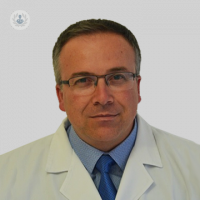Addressing back pain of facet origin
Written by:It is estimated that approximately 50-80% of the adult population will develop at least one episode of back pain throughout his life. Most people improve spontaneously with conservative treatment without resorting to surgery. In recent years there have been major advances in non-surgical techniques and developed new products and systems approach to chronic low back pain.

But what exactly is low back pain and low back pain of facet origin?
Low back pain or low back pain is defined as one located between the lower edge of the ribs and the lower limit of the buttocks. 80% of enrolled uncomplicated low back pain and improve within 4-6 weeks. 15-20% respond to a specific cause and about 10% become chronic. There are many causes of back pain (herniated disc, spinal stenosis, spondylolisthesis, etc.), but one of the main causes, which often goes unnoticed, is the back pain of facet origin. This pain originates in the posterior joint complex of the spine and is usually associated with an osteoarthritic process.
It is characterized mainly by low back pain with morning stiffness lasting more than 30 minutes, improving with movement but not the rest, inability to stand or sit long periods of time, waking up in the second half of the night alternating pain in both buttocks. This pain usually occurs mainly from the fourth decade of life and its incidence increases with age.


Treatment of low back pain of facet origin
The treatment is initially conservative, combining anti - inflammatory drugs, such as celecoxib, with weak opioids, such as tramadol. Rehabilitation treatment is also recommended strengthening the lumbar muscle. If conservative treatment is not effective is indicated, by the expert in Pain Unit , radiofrequency (heat injury) of the medial branch of the posterior lumbar root. This medial branch is the nerve that collects the sensitivity of each facet joint. It is divided into two branches, an upper joint innervating level and a lower joint innervating lower level, so the procedure must be performed at least on two levels.
With proper selection of patients pain relief figures 50-67% of patients are achieved. The procedure is performed on an outpatient basis, it is performed under local anesthesia and is painless. After its completion the patient can carry out their normal activities the next day, but it should be noted that its results can not be evaluated until after at least two weeks. The procedure can be repeated a year have been made, if necessary.
Edited by Patricia Crespo Pujante



